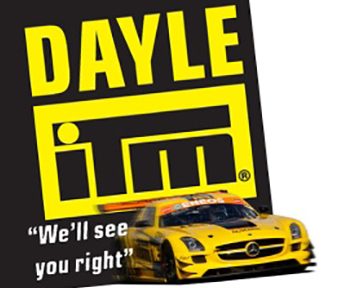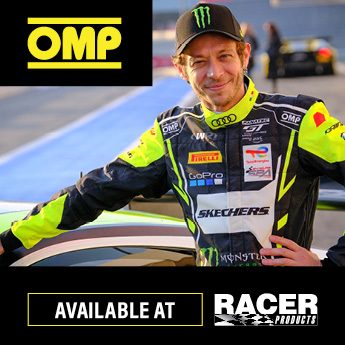True friends are never apart, maybe in distance but never in the heart.
No truer words can be spoken and for Former Tasman Series champion Graeme Lawrence it comes with particularly strong connotations as ‘Shag’ opens up on his friendship with two-time world champion Jim Clark.
After Lawrence etched his name into New Zealand motor racing history by decisively winning the 1968 National 1.5-litre series (equivalent of Formula 3) in just his third year of competitive car racing, close friend and motorsport hero Bruce McLaren invited Lawrence to a dream opportunity to contest the European Formula 2 championship with his own team.
A star-studded Lawrence switched the Whanganui countryside for industrial Europe to run an uncompetitive McLaren-built F2 car in a grid alongside the legendary names of Jochen Rindt, Jackie Stewart, Graham Hill and Clark.
Times were indeed very different for Formula 1 drivers in the 1960s. Safety was largely ignored, a playboy lifestyle admired and drivers embraced the opportunity to race in multiple different formulas across the off-season.
Speaking in an interview with the Australian Racing Group about the S5000 series, Lawrence reminisced not so much on the racing in Europe but on his time with Clark, including the tragic race in Hockenheim which saw the racing world one of the most complete drivers it had ever witnessed.
“The relationship with Jim was very similar to a lot of Kiwis and Australians,” said Lawrence.
“He was such a neat guy, just an everyday guy. All the Europeans loved coming to Australia and they all made good friends.
“That friendship carried on, and when we went to Europe he was genuinely interested in what we had been up to and how our racing was going back home.”
Lawrence was at Hockenheim in West Germany for the second round of the European championship in April 1968 with McLaren in the team’s Cosworth-powered car which was plagued by a malady of errors.

Lawrence remembers the start of the day was like any other April day, ashen skies with intermittent showers settled in from the break of dawn.
While considered a ‘minor race meeting’, several figurehead names were present at the circuit. Chris Amon was piloting the lead Ferrari while Lotus wheeled out with its factory drivers Hill and Clark.
Clark was never set to contest the race meeting but originally slated to run a British Sportscar race only to have contract obligations shelve his initial plans.
The race meeting was split into two heats and the morning of the first heat Lawrence remembers having breakfast with Clark, admitting the Scotsman seemed less vibrant than his usual self.
“On the morning of that race at Hockenheim (Deutschland Trophäe, the opening round of the European Formula 2 Championship), I had breakfast with Jim and a few of the boys.
“Jim and I then headed out to the circuit together and I could tell he wasn’t really happy driving F2.
“He wanted to win as he did in F1 and although he didn’t say it, he knew the F2 Lotus perhaps wasn’t getting the attention that the F1 cars were. He said to me “are you comfortable, are you happy doing this (F2)?”, to which I replied “yes I am Jim, we’re making headway and if I don’t do this I’ll be at home in New Zealand doing nothing!
“My last sighting of Jim was on the grid for that last race. He was a couple of rows ahead of me, and Graham Hill was on the next row behind Jim.
“He was halfway into the cockpit, and before he got into the seat he turned around and gave Graham the two fingers! That’s the way all those guys were.”

Clark took to a damp grid in an uncharacteristic seventh after a frustrating practice session. A sluggish start then saw him yield another position as he battled to regain his special touch.
Then, on his fifth tour, Clark’s car was seen to get loose at right-hander at over 140mph before veering off the circuit and careening into a tree.
He died instantly, aged just 32.
“We didn’t even know he went off in the race until the officials’ cars came onto the circuit, then we found out that he’d had a big accident,” recalled Lawrence.
“The hardest thing was that there were two races that day, and we knew before the second race that Jim had passed away.
“Starting that next race, man, that was hard. I make no bones about it; I was sitting in the car bawling my eyes out.”
Clark’s death rocked the motorsport world and was the catalyst in Jackie Stewart launching his life-long pursuit to improve driver safety. Similarly, it signified the end of the amateur era of F1 drivers with teams banning their top drivers from competing in junior formulae for fear of another tragic accident.
A post-crash investigation concluded a mechanical failure was to blame, as has been the downfall of many of Formula 1’s greatest; Rindt, Senna, Bianchi. All of whom were merely victims of luck, not a drop in skill.
Lawrence returned to New Zealand after his European campaign to debut the Ferrari 246 T developed by Chris Amon in the 1970 Tasman Series, winning on his first attempt in Levin.
Today, Lawrence and partner Maree operate a rest home in Raglan but continue to show a keen interest in local motorsport.


















Thank you for sharing your experience ,
Jim Clark was my hero in racing! I have never forgotten that day! He was the greatest in my eyes I saw him race in Europe in 1963,64 and 1965!
Thankyou for the oportunity to read about the true feelings of Graeme who raced against many of the motorsport greats from the late 60s, early 70s, a dangerous but memorable era in racing.